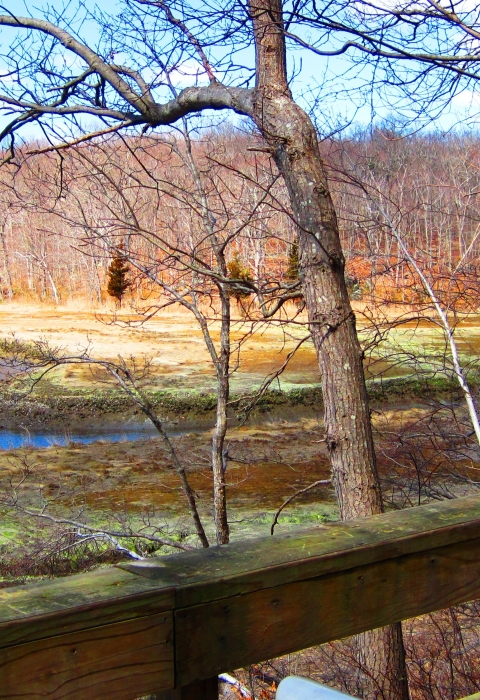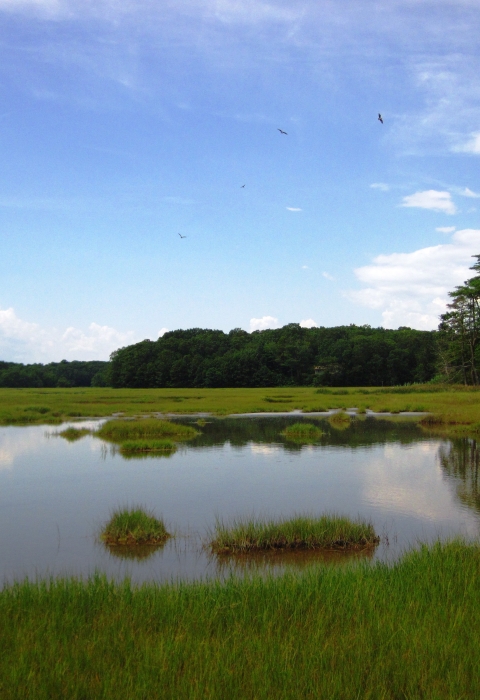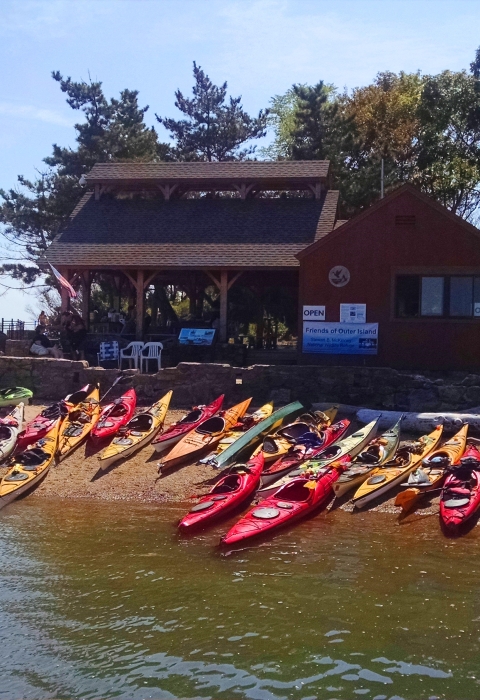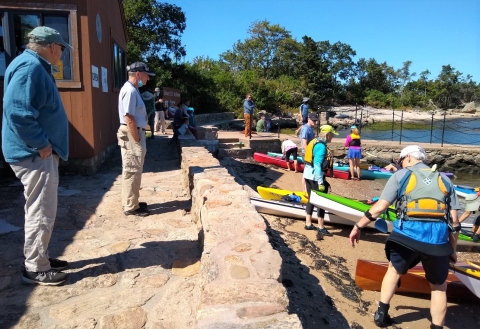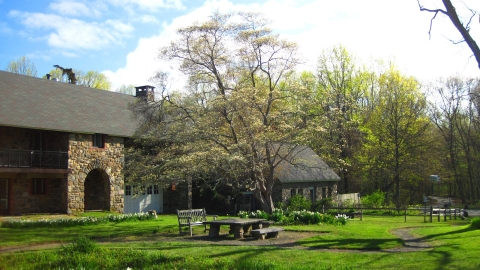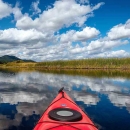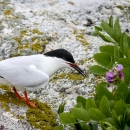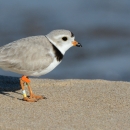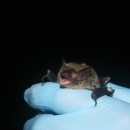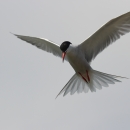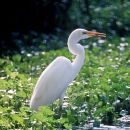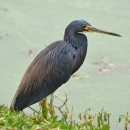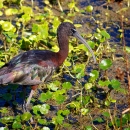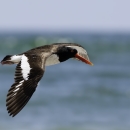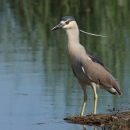Visit Us
Birds, mammals, sea creatures, colorful trees, rare plants, historic buildings and cultural features - all of these interesting things are found at the refuge. Many refuge units have nature trails, wildlife observation platforms and other visitor facilities.
See our LOCATIONS section to find out how to get to us.
Know before you go:
Visitors to the refuge should dress appropriately for the weather and wear sturdy walking shoes. Long pants can help defend against ticks, which are found at some refuge units. Areas with marsh and wetlands have mosquitoes in summer – so insect repellent is advisable.
Visitors must remain on established trails, at viewing platforms and in other areas open to the public. Going off trail into forest, marsh or other habitats is prohibited.
Ranger and volunteer-led tours and programs are available, especially in summer and early fall, to enhance the visitor experience.
Dogs, cats, horses or other domestic animals are not allowed anywhere on the refuge. However, service dogs are always allowed.
Additional questions regarding visitation may be directed to the Visitor Services Manager at 860-399-2513 ext 8134.
Location and Contact Information
About Us
Stewart B. McKinney National Wildlife Refuge is comprised of 10 units stretched across 70 miles of Connecticut's coastline. It was established in 1972 and was originally called Salt Meadow National Wildlife Refuge. The refuge was renamed in 1987 to honor the late U.S. Congressman Stewart B. McKinney, who was instrumental in expanding it.
Located in the Atlantic Flyway, the refuge provides important resting, feeding, and nesting habitat for many species of wading birds, shorebirds, songbirds and terns, including the endangered roseate tern. Adjacent waters serve as wintering habitat for brant, scoters, American black duck and other waterfowl. Overall, the refuge encompasses over 1,000 acres of forest, barrier beach, tidal wetland and fragile island habitats.
The Salt Meadow Unit in Westbrook, the Falkner Island Unit in Guilford, and the Great Meadows Unit in Stratford all have been designated as Important Bird Areas by the National Audubon Society. The Falkner Island Unit is home to over 40 pairs of nesting federally endangered roseate terns and over 2,000 nesting pairs of common terns. The Salt Meadow Unit is used by over 280 species of migrating neotropical birds during the spring and fall migrations.
The refuge also contains unique historic buildings - such as the Falkner Island Lighthouse and the Lape-Read House and Enoch Murdock House at Salt Meadow. The Chimon Island Unit in Norwalk contains a small memorial area for Congressman Stewart B. McKinney, who was instrumental in expanding the refuge. These buildings, landscapes and other features evoke the stories of the people of the Connecticut coast and how they shaped the refuge.
Tours
Many of the refuge's units have self-guided trails and open areas you can explore at your own pace. However, guided interpretive tours and other programs are given throughout the year - especially in summer and early fall. For information about upcoming events and other current information, check out our Facebook page. You may also call headquarters at 860-399-2513 and ask for the visitor services manager.
What We Do
Stewart B. McKinney National Wildlife Refuge protects some of the last remain coastal habitats in Connecticut that are relatively undisturbed and undeveloped. These places are crucially important to wildlife, especially at-risk species that need space to feed, rest, establish a home and raise their young. We try to balance the needs of wildlife with the needs of people - allowing approved recreation such as trail walking, wildlife observation, interpretation, photography and other activities whenever possible.
Our Organization
Projects and Research
1) Tern Monitoring Project - participate in a range-wide research project focused on the endangered roseate tern that encourages the collection of productivity, provisioning, and tern movement data.
2) Salt Marsh Integrity Study - a region-wide program to asses the health of our salt marshes
3) Shorebird Monitoring - annual surveys of nesting shorebirds on the refuge - species include piping plover, American oystercatcher, and least tern
4) Invasive Plant Mapping - we are currently mapping all of our Units for priority invasive plant species so we have a better idea of the density, location, and management options for these populations
5) Long-term Bee Monitoring - in partnership with the Connecticut Agricultural Experiment Station, we are sampling the bees at the Salt Meadow Unit to contribute to baseline data on these populations for the state
6) Stratford-Great Meadows Restoration – in partnership with NOAA, CTDEEP, Audubon Connecticut and several others – this project will restore hundreds of acres of salt marsh salt marsh
Salt marshes are found in tidal areas near the coast, where freshwater mixes with saltwater.
Learn more about salt marsh habitat so that at-risk species like salt marsh sparrows can survive and nuisance species like mosquitoes are reduced
7) Kirtland Landing Improvement Project – in partnership with the Town of Westbrook, USDOT, CTDOT and others – this project will provide major improvements so visitors can more easily access the Menunketesuck River and the water portion of the refuge’s Salt Meadow Unit for non-motorized watercraft and small boats.
